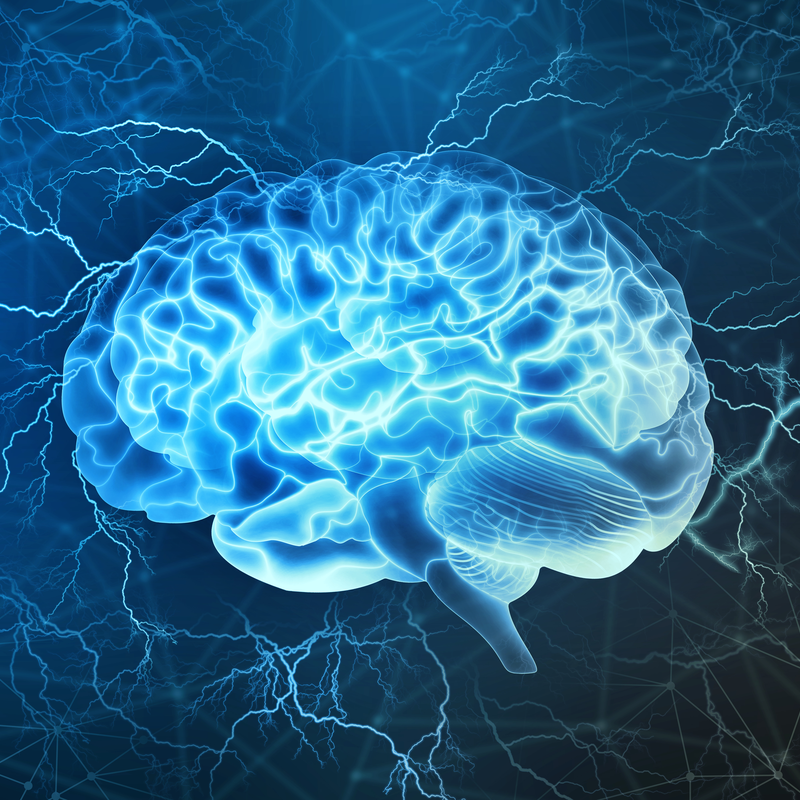
What is a malignant brain tumour?
A malignant (malignant) brain tumour manifests itself as a growth in the brain, where the tumour may have originated in the brain or spread to the brain through mestastasis from another part of the body. A malignant brain tumour, also called glioblastoma, is the most aggressive form of a brain tumour, which occurs more often in older people. Men are more likely to develop a malignant brain tumour than women. The average age of onset is between 55 and 65 years.
A glioblastoma belongs to the group of gliomas, because it has long been assumed that a glioblastoma develops from the supporting tissue of the brain, the so-called glial cells. However, there is no evidence for this so far. A malignant brain tumour grows very quickly and aggressively.
How and where do malignant brain tumours form?
Glioblastomas can develop from the less malignant astrocytomas. They manifest themselves particularly often in the cerebrum. In general, glioblastomas can occur in all lobes of the brain, but they are most common in the frontal and temporal lobes. Glioblastomas occur more rarely in the cerebellum, the brain stem and the spinal cord. If they are so-called hemispheric glioblastomas, they often grow over the bar to the other side. These types of tumours are called "butterfly gliomas" . Glioblastomas are generally characterised by their diffuse infiltrating growth.
What causes malignant brain tumours?
The exact causes of development and risk factors of glioblastomas are not yet known. The assumption that frequent and intensive contact with mobile radio could contribute to the development of glioblastomas has not yet been confirmed. A genetic disposition can also be ruled out according to the current state of knowledge .
How can a malignant brain tumour be prevented?
It is not yet possible to prevent the development of a malignant brain tumour or to diagnose it at an early stage as part of a preventive medical check-up .
What are the symptoms of a malignant brain tumour?
A malignant brain tumour can manifest itself through the following complaints and should be urgently clarified by a doctor:
- Headache,
- Dizziness,
- Personality changes, which can manifest themselves, for example, as anxiety, depression or lack of inhibition,
- Feelings of weakness,
- Sensory disturbances,
- Disturbances of equilibrium,
- Impaired concentration and/or memory,
- Seizures and/or paralysis,
- Loss of coordination,
- sudden epileptic seizures,
- Visual and speech disorders
The
symptoms of a glioblastoma always depend on the
location of the brain where the tumour has formed. They can also vary in intensity as the tumour grows.
How is a malignant brain tumour diagnosed?
As with other types of cancer, a malignant brain tumour is diagnosed using the following common imaging examination procedures:
- Computed tomography (CT): can show images of the brain as an X-ray-based procedure.
- Magnetic resonance imaging (MRI): has been the standard method for diagnosing brain tumours.
- Positron emission tomography (PET): in this procedure, a weakly radioactively labelled amino acid is injected as a contrast agent and its distribution in brain and tumour tissue is then determined.
However, in order to clearly identify
the tumour as malignant, it is necessary to take a
tissue sample (biopsy).
In some cases, a supplementary examination such as an
electroencephalography and/or a lumbar puncture may also be ordered.
These examinations make it possible to assess the seizure tendency, but also
the differential diagnostic differentiation from lymphomas or
brain abscesses.
At the time of diagnosis, glioblastomas can either appear in one place in the brain or be visible by the formation of several tumours. Typical for a glioblastoma is diffuse and infiltrative growth. Specifically this means that the tumour cells grow uncontrollably into the healthy brain tissue.
How is a malignant brain tumour treated?
The first choice of treatment will always be surgical removal of the tumour (tumour resection). The aim is always to remove the visible part of the tumour as completely as possible without impairing neurological or cognitive functions of the brain. Since the complete removal of the brain tumour is almost impossible, the remaining tumour cells of the glioblastoma are treated after the operation using a combination of several forms of therapy, such as chemotherapy and radiation. In the case of irradiation, cell division is impaired by so-called photon radiation, in order to inhibit further growth of the tumour cells. In the best case, radiation leads to the death of the tumour cells. Chemotherapy , on the other hand, uses the drug temozolomide. This is a drug that is supposed to prevent the tumour cells from multiplying . Temozolomide is one of the so-called alkaylances, which damages the genetic information of the tumour, i.e. its DNA, and thus hinders its replication.
What is the prognosis for a malignant brain tumour?
A malignant brain tumour is not curable so far. Due to the diffuse infiltration of the brain tissue by the tumour cells, it is common for the disease to develop again within a few months after treatment. However, thanks to intensive research, doctors have been able to have a significantly positive influence on the course of the disease in recent years, so that the survival rate has improved and many patients continue to live with glioblastoma for several years. This has been made possible primarily by advances in microneurosurgery, but also by radiation therapy that is less stressful for the patient and improved therapy with chemotherapeutic drugs.
What is life like with a malignant brain tumour?
Especially after an operation, inpatient or outpatient rehabilitation can be advisable. This is especially true if the patient has to relearn his muscular mobility or his ability to speak. For brain tumour patients, however, the stabilisation of the family environment should be the first priority. Should patients therefore prefer treatment at home, this should be made possible for them .
